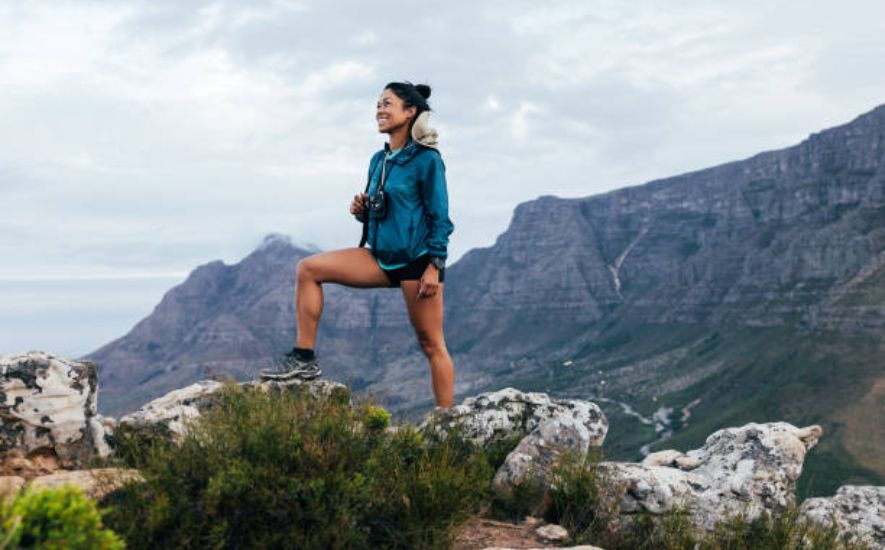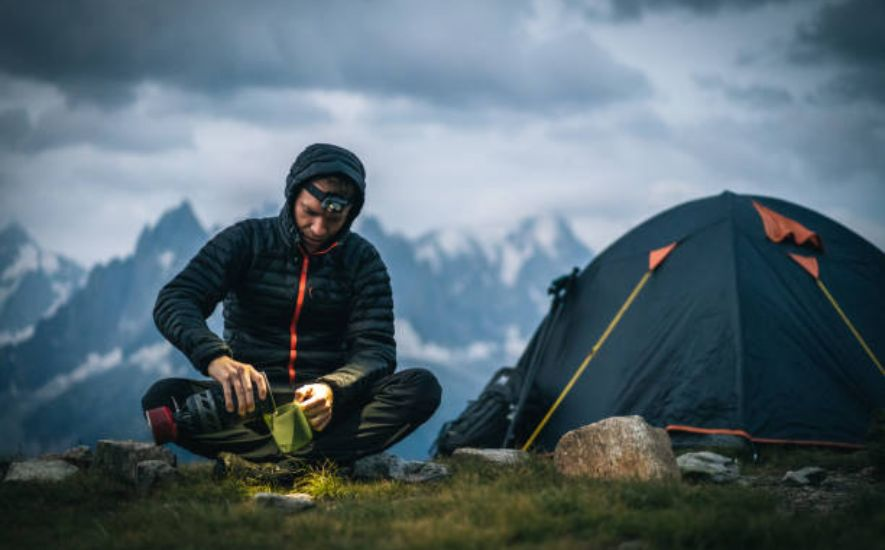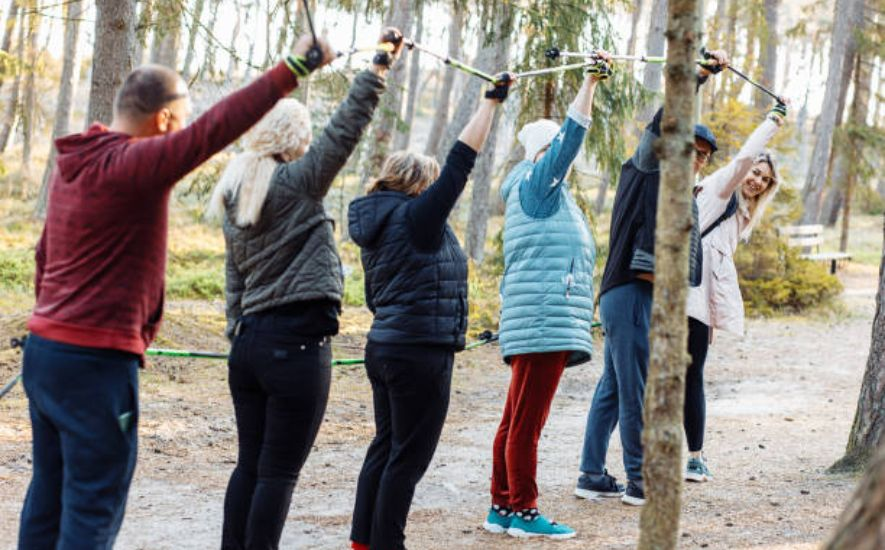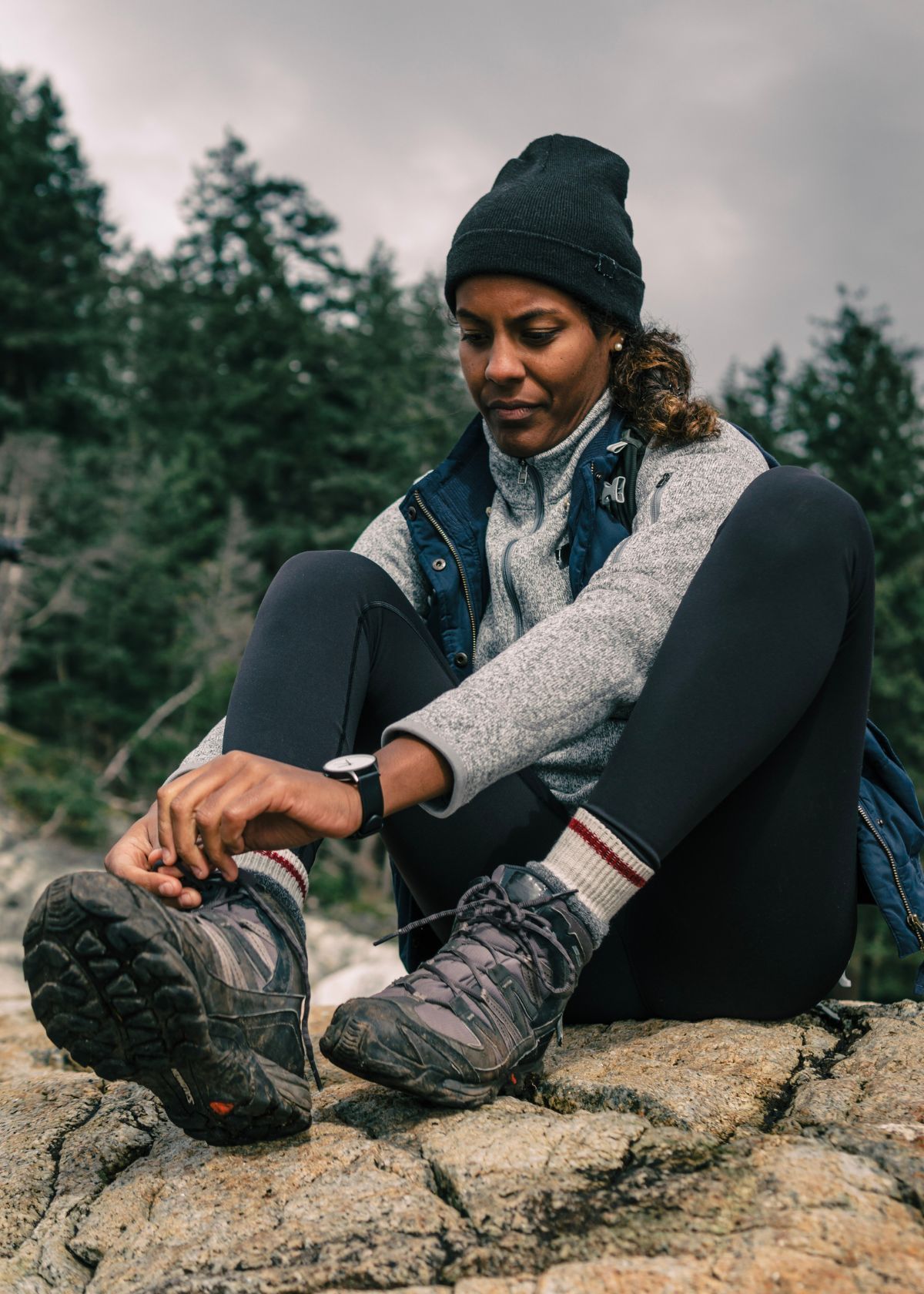Hiking is an excellent way to explore the beauty of nature while simultaneously getting some much-needed exercise. It provides a sense of adventure, a challenge, and a chance to escape the daily grind. Whether you're a seasoned hiker or a beginner, a training routine is essential for a successful hike. Not only will it make the experience more enjoyable, but it will also ensure that you stay safe on the trail.
Training for hiking involves more than just going on a few walks or jogs. It requires a holistic approach that builds strength, endurance, and flexibility. With proper training, you'll easily tackle steep inclines, rocky terrain, and long distances.
This guide will explore some of the best resistance training strategies for hikers, including exercises to build leg and core strength, cardio workouts to improve endurance, and stretching routines to increase flexibility.
We'll also cover some essential hiking gear and tips to help you stay safe and comfortable on the trail. Whether you're planning a short day hike or a multi-day backpacking trip, this guide will provide you with the knowledge and tools you need to train effectively and enjoy the great outdoors to the fullest.

Best Training Strategies For Hikers
Hiking is a great way to connect with nature, explore new places, and challenge yourself physically and mentally. However, mountain hiking can be demanding, and it is crucial to be adequately trained and prepared to avoid injuries and make the most out of the experience.
With the right training schedule, you can increase your strength, endurance, and flexibility, allowing you to tackle longer, more challenging trails with ease. Whether you're a seasoned hiker or new to the activity, these weight-training strategies will help you achieve your hiking goals.

Build Your Endurance
One of the most crucial aspects of hiking is endurance. Hiking requires walking for extended periods, often on uneven terrain, which can be physically demanding.
To build endurance, incorporate cardio exercises such as running, cycling, or swimming into your routine. Gradually increase the duration and intensity of your workouts to improve your cardiovascular health and endurance.
Strengthen Your Lower Body
Hiking involves a lot of uphill and downhill walking, which significantly strains your lower body muscles. To prepare for the demands of hiking, focus on strengthening your lower body muscles, including your quads, hamstrings, glutes, and calves. Exercises such as lunges, squats, and calf raises can help you build strength and reduce the risk of injury.
Train with a Backpack
Hiking with a backpack adds an extra challenge, increasing your weight and affecting your balance. To prepare for the demands of hiking with a backpack, start training with a weighted backpack during your workouts. Gradually increase the weight of your backpack as you get stronger, and adjust the weight distribution to ensure proper balance.
Practice Flexibility Exercises
Hiking requires moving your body in various directions, including uphill, downhill, and side-to-side movements. To avoid injuries, it's crucial to have good flexibility and mobility. Incorporating yoga or Pilates into your training program can help improve your flexibility and balance, reducing the risk of injuries.
Get Outside and Practice
Lastly, getting outside and practicing is the best way to prepare for hiking. Start with shorter, easier hikes and gradually work your way up to longer, more challenging ones. Practicing on different terrains and elevation gain will help you get used to the demands of hiking and develop the necessary skills and confidence.

Essential Hiking Gear
Hiking is an exciting and rewarding activity that can take you to some of the world's most beautiful and remote parts. Whether you are a seasoned hiker or just starting, having the right gear can make all the difference in your comfort, safety, and overall enjoyment of the experience.

Footwear
Your footwear is one of the most important pieces of gear when it comes to hiking. A good pair of hiking boots or shoes will support, traction, and protection for your feet. Look for boots or shoes with good ankle support, a sturdy sole, and a waterproof and breathable membrane.
Clothing
Dressing appropriately for the weather and conditions is essential for a successful hiking trip. You'll want to bring moisture-wicking, quick-drying, and lightweight clothing. Layers are also key for regulating your body temperature. Don't forget a hat and sunglasses for sun protection.
Navigation
A map and compass (and the knowledge of how to use them) are essential for navigating on any hiking trail. You can also bring a GPS device or smartphone with GPS capabilities, but be sure to bring extra batteries or a charger.
Backpack
A backpack is necessary to carry all of your essential gear, food, water, and extra clothing. Look for a backpack with comfortable shoulder straps and a waist belt to distribute the weight evenly.

Tips to Help you Stay Safe and Comfortable on the Trail
Hiking is a great way to enjoy nature, stay active, and unwind from the stresses of everyday life. However, as with any outdoor activity, there are risks involved. Whether you are a seasoned hiker or just starting out, it is important to take steps to ensure your safety and comfort on the trail.

I. Plan Ahead
Before heading out on the trail, it is important to do some planning. Research the trail and familiarize yourself with the route, trail conditions, weather forecast, and any potential hazards. Ensure you have the gear and supplies for the hike, including water, food, a map, a compass, and a first aid kit.
II. Dress Appropriately
Wearing the right clothing and footwear can make a big difference in your comfort and safety on the trail. Choose lightweight, breathable, and moisture-wicking clothing to help regulate your body temperature. Wear sturdy, comfortable shoes or hiking boots with good traction and support.
III. Stay Hydrated and Nourished
Dehydration and hunger can quickly ruin a backpacking trip. Make sure you bring enough water and snacks to sustain you throughout the hike. Drink water regularly, even if you don't feel thirsty, and eat snacks to keep your energy levels up.
IV. Follow Trail Etiquette
Respect other hikers, wildlife, and the environment by following trail etiquette. Stay on designated trails, avoid disturbing wildlife, and pack out all trash. Yield to other hikers on narrow trails, and announce yourself when passing.

The Step-Up Guide to Hiking Training
Hiking is a great way to explore the great outdoors, exercise, and clear your mind. However, it's essential to properly prepare for a hiking trip, especially if you're a beginner or haven't hiked in a while. This step-up guide to hiking training will provide you with all the information you need to get started on your hiking journey.

Start with Shorter, Easier Hikes
Before you hit the trails for a long, challenging hike, starting with shorter, easier training hikes is important. This will help you build up your endurance and get used to hiking on different terrain. You can gradually increase the length and difficulty of your hikes as your body becomes more robust and accustomed to hiking.
Focus on Cardio and Strength Training
Hiking requires both cardiovascular endurance and muscular strength. To prepare for a hiking trip, it's important to focus on both types of training. Cardio training like running, biking, or swimming can help build endurance, while strength training exercises like squats, lunges, and planks can help build the muscles you'll need to tackle steep inclines and uneven terrain.
Practice Proper Form and Technique
Good hiking techniques can help prevent injuries and make your hiking experience more enjoyable. Keep your back straight, your shoulders relaxed, and your feet shoulder-width apart when hiking. Take shorter steps when going uphill and longer steps when going downhill to help prevent knee strain.
Invest in Proper Gear
Having the right gear can make all the difference in hiking. Invest in good hiking boots with ankle support, breathable clothing, and a backpack to carry essentials like water, food, and a first aid kit. Make sure also to bring sunscreen, insect repellent, and a hat to protect yourself from the sun.
Gradually Increase Difficulty
As you become more experienced, the difficulty of your challenging hikes gradually increases. This can include hiking on more challenging terrain, increasing the length of your hikes, or carrying a heavier backpack. However, listening to your body and not pushing yourself too fast is essential, as this can lead to injury.

Alternative Hiking Training Methods
Hiking is a beautiful way to explore the outdoors and get some exercise, but it can also be quite challenging. To make the most of your hikes and avoid injuries, it's important to train correctly.
While traditional hiking training methods such as cardio and strength training are effective, alternative methods can be used to prepare for your next hiking adventure.

Yoga
Yoga is a great way to improve your flexibility, balance, and strength, which are important for hiking. Practicing yoga regularly can also help to reduce the risk of injury while on the trails. Yoga poses such as Downward-Facing Dog, Warrior II, and Tree Pose are particularly helpful for hikers, as they help to build strength in the legs, hips, and core.
Pilates
Pilates is another great way to improve your fitness and prepare for hiking. This low-impact exercise focuses on building strength in the core muscles, essential for maintaining good posture and balance on the trails. Pilates exercises such as the Hundred, Roll-Up, and Side Plank can particularly benefit hikers.
Swimming
Swimming is a great full-body workout that can help to improve cardiovascular endurance and build strength in the upper body. This can be particularly helpful for hikers carrying heavy backpacks or trekking poles.
Swimming also provides a low-impact workout that is easy on the joints, making it a good option for those recovering from injuries or chronic pain.
Trail Running
Trail running is a great way to build cardiovascular endurance and improve overall fitness.
It also helps strengthen the muscles in the legs and core, which is essential for hiking. Trail running can also be a great way to explore new hiking trails and get a feel for the terrain before embarking on a longer hike.
Stair Climbing
Stair climbing is a great way to build strength in the legs and improve cardiovascular endurance. This can be particularly helpful for hikers tackling steep inclines and declines on the trails. Stair climbing can be done on a machine at the gym or by finding a set of stairs in your local area.

Key to Hiking Training Success
Hiking is a fantastic way to explore nature and challenge yourself physically and mentally. However, it's important to prepare and train properly to ensure a safe and enjoyable experience.
Whether you're a seasoned hiker or just starting, the key to hiking training success is following a few fundamental principles.

Set Realistic Goals
The first step to successful hiking training is to set realistic goals. These goals should be specific, measurable, achievable, relevant, and time-bound (SMART).
For example, you may want to hike a particular trail or reach a certain peak by a specific date. Whatever your goals, make sure they are realistic and achievable based on your fitness level and experience.
Develop a Training Plan
Once you've established your hiking goals, it's time to develop a training plan. Your plan should include cardiovascular and strength training exercises to improve endurance, stamina, and overall fitness.
Aim to include at least 30 minutes of cardio exercise, such as walking, running, or cycling, three to five times per week, and strength training exercises two to three times weekly to build muscle and improve your overall fitness.
Gradually Increase Intensity and Duration
As you progress with your training, it's important to increase the intensity and duration of your workouts gradually. This will help to prevent injury and build your endurance over time.
Start with shorter hikes and gradually increase the distance and elevation as your fitness improves. Aim to increase your intensity by incorporating hills or stairs into your workouts or by carrying a weighted backpack.
Practice Hiking-Specific Skills
In addition to cardiovascular and strength training, it's important to practice hiking-specific skills, such as balancing on uneven terrain and navigating steep inclines and descents. You can incorporate hiking-specific exercises, such as single-leg squats, lunges, and balance exercises, into your training. You can also practice these skills on local trails or in a park.
Fuel Your Body Properly
Proper nutrition is essential for hiking success. Fuel your body with a balanced diet of carbohydrates, protein, and healthy fats. Aim to eat a meal or snack that includes complex carbohydrates, such as whole grains or fruits, two to three hours before a hike.
Bring snacks high in carbohydrates and easy to digest during your hike, such as energy bars, trail mix, or fruit.

Frequently Asked Questions (FAQs)
Hikers need to handle the challenges of long-distance hiking: carrying heavy packs, dealing with weather changes, and adjusting their daily routines to include extended periods of walking each day. Here are some answers to common questions about training for hiking:
What are the best exercises for hiking?
The best exercises for hiking are those that improve your endurance, strength, and balance. Cardiovascular exercises like running, cycling, and swimming are excellent for building endurance, while strength training exercises like lunges, squats, and calf raises can help build the necessary muscles for hiking.
Balance exercises like single-leg stands and stability ball exercises can help improve your stability on uneven terrain. Incorporating stretching and flexibility exercises like yoga or Pilates is essential to reduce the risk of injury and improve your overall fitness level. It's recommended to include a variety of exercises into your routine to target different muscle groups and prevent boredom.
What are the 3 basic skills in hiking?
The three basic skills in hiking are endurance, navigation, and safety. Endurance involves the physical and mental ability to hike for an extended period, often over difficult terrain and changing weather conditions.
Navigation involves reading maps, using a compass or GPS device, and understanding landmarks to stay on the intended trail. Safety involves being prepared for inclement weather, wildlife encounters, and injuries.
It also includes knowledge of basic first aid and emergency protocols. These three skills are essential for a successful and safe hiking experience.
How do you train for uphill hiking?
To train for uphill hiking, you should build your endurance and strengthen your lower body muscles. Some effective exercises for building lower body strength include lunges, squats, and calf raises.
It's also essential to incorporate cardiovascular exercises like running or cycling to improve your endurance. Additionally, practicing hiking on inclines or stairs can help you build the specific skills needed for uphill hiking.
Gradually increase the intensity and duration of your workouts to avoid injury and improve your performance. It's also important to wear appropriate gear and stay hydrated during your training sessions.
How do I prepare my feet for hiking?
Preparing your feet for hiking is crucial for a comfortable and safe journey. Start by choosing proper hiking shoes that fit well and are broken in. Before hiking, do stretching exercises for your feet and ankles to warm up your muscles and prevent injuries.
Consider using moisture-wicking socks to keep your feet dry and prevent blisters. It's also a good idea to trim your toenails and apply right and left foot powder to help reduce friction. Finally, pack a first-aid kit and take breaks often to rest and stretch your feet. With these steps, you can ensure your feet are ready for a successful and enjoyable hiking experience.
What are the 7 tips for hiking?
Hiking is a great way to enjoy the outdoors, exercise, and connect with nature. However, being prepared and staying safe while on the trails is important. Here are seven tips for hiking:
- Plan your route and check the weather before you go.
- Wear appropriate clothing and footwear.
- Bring plenty of water and snacks.
- Pack a first-aid kit and know how to use it.
- Stay on the designated trails and be respectful of nature.
- Let someone know where you're going and when you expect to return.
- Be prepared for emergencies and know how to contact help if needed.
Following these tips can help ensure a safe and enjoyable hiking experience.

Conclusion
In conclusion, training for hiking is an essential aspect of preparing for a successful outdoor adventure. With the right approach, you can improve your physical fitness, endurance, and mental toughness, allowing you to conquer challenging trails and experience the beauty of nature in a whole new way.
Remember to start small and gradually increase the intensity and duration of your training to avoid injuries and burnout. And most importantly, enjoy the journey, embrace the challenge, and savor every moment of your hiking experience.
With dedication, patience, and a willingness to push yourself, you can reach new heights and discover the fantastic benefits of hiking for your mind, body, and soul. Happy trails!











